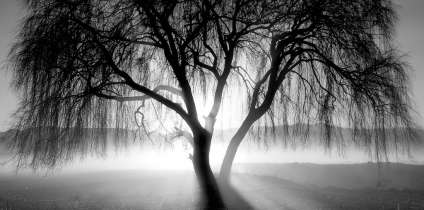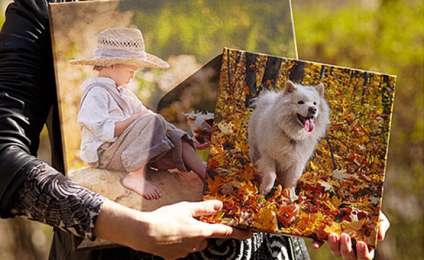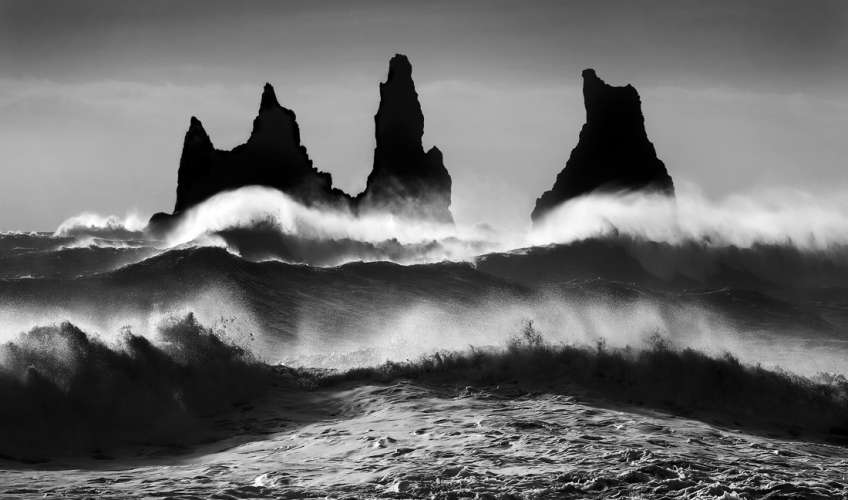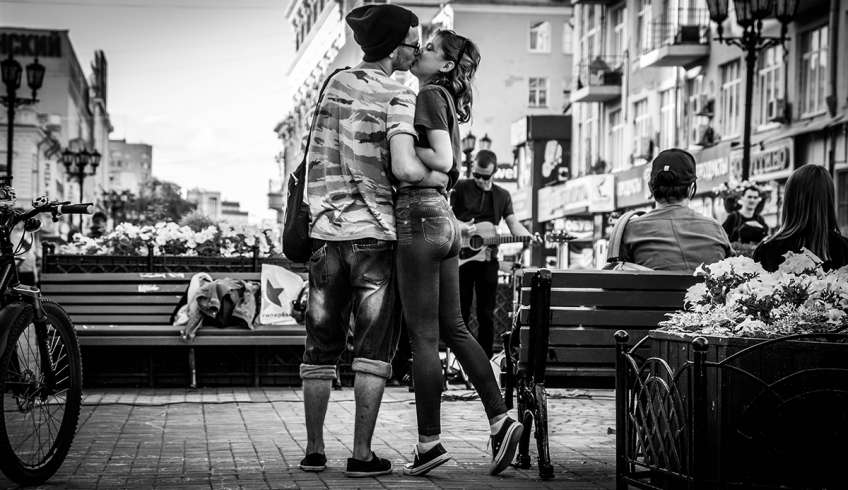Black and white photo
Published: 24.12.2019

We live in a world of color photographs. Black and white pictures are a separate genre with a long history that began long before the first color image.
Color cannot replace black and white art, as sometimes it distracts, causes boredom, and can be lifeless. A black and white photograph simplifies the image, reflects the essence, which is often colorless.
Why are black and white photographs needed?
Look at the black and white photo. It will touch you more than the colored one, because it looks more honest.
The digital age allows manipulating images to create any picture. Black and white photos are the first, so colorless images are often seen as more artistic or creative.
Black and white photography makes a statement for itself and stands out from the colorful crowd. The absence of color in the image makes the viewer think, as it deprives them of the familiar way of "reading" the image. Against the background of colorful pictures, the focused calmness of a black and white image is intriguing.
Black and white photos have a surprisingly strong impact on the viewer. There are images that do not evoke emotions in full color mode. For example, bare tree branches against the sky or a single flower on the ground.
The naturalness and depth of black and white photographs simultaneously frighten and fascinate, evoke nostalgia or sadness.
Remember that not all objects and scenes captured without color possess magnetism. Therefore, it is important to clearly understand why this shot should be monochrome.
Cameras.
There are cameras specifically designed for monochromatic images. Such equipment is known for the sharpness and clarity of black and white images. However, for amateur photography, the practicality of using such a camera is zero. Especially considering that it costs over 8,000 dollars.
RAW format.
RAW stores color information. Enable monochrome mode in this format. Black and white frames will be visible on the camera screen. And in post-processing, the image will be in color, as RAW does not discard the "color" information. If you don't like the final black and white image, you can instantly convert it to color.
Post-processing.
Color photos can be turned into monochrome. This method opens up opportunities for creativity, as even after converting the image into black and white, colors can still be adjusted, brightness and contrast can be regulated.
Each photo is a masterpiece! Don't hide unique shots in your phones and cameras from viewers. A worthy way to showcase your talent and preserve memories is to print photos on canvas.
Shadow.
This optical phenomenon cannot be regarded as "dark areas.
Shadow is the main component of the composition, and sometimes even the object itself.
In black and white photography, shadows have an unpredictable impact on the image. They attract the viewer's attention much more strongly than in color photos.
There is a great temptation to learn how to capture a range of shadows in a frame: from deep darkness to sharp highlights. But remember that a single shadow, without any nuances and details, signals to the viewer about natural danger or emptiness. On the other hand, filling the image with subtle, detailed shadows adds mixed emotions to the picture. Take photos the way you like. But make sure that the shadows do not alter the composition.
Contrast.
Sharp contrasts in brightness between two objects are expressed in the saturation of each, so the image attracts the eye. Low-contrast images do not draw attention, but upon closer inspection, they impress with soft, muted shades of gray. A monochromatic image of a gentle spring day with intense contrast will distract from the mood of the picture. On the other hand, a soft gradient will evoke the necessary emotions.
Done.
A two-tone image is neither bright nor dark. However, it is important to pay attention to the shades of the image even while taking the photo. Tones, like contrast, send powerful messages to the viewer and convey mood. Even slight variations in tone can change the character of the image. Tones should frame and emphasize the scene you are capturing, harmonizing with the subject. It is important to use tones consciously. This way, you can effectively convey your story to people.
Form.
People automatically recognize shapes and figures. They recognize a non-colored object by its shape. A monochromatic photo of each object is a black and white silhouette. But everyone will understand what is depicted in the picture.
In black and white photography, there is no possibility to play with colors to make the picture understandable. Shape is important for the plot. It helps the viewer make sense of the photograph.
Texture.
Color is the emotional foundation of photography. In a black and white image, this role is given to texture, which fills the photograph with sensations. Form creates the basis of the picture, while texture fills the rest of the space. The individuality of the image is given by smooth pebbles or dull rust. Chaotic, rough texture enhances the sense of anxiety. Smooth or repetitive textures convey harmony.
Meaning.
Photos are meaningful regardless of the color palette in the shot. But black and white pictures also stimulate the imagination.
The absence of familiar colors and shades stimulates the viewer to look at the photo longer and more attentively, to think, and to experience new sensations.
This effect is easier to achieve in black and white photography than in color.
Emotion.
It's not about the feelings you experience when pressing the camera button.
Emotions are the highest point of mastery for a photographer who has managed to combine in one shot the elements described above.
An emotional message will resonate with the viewer, set the mood, and reveal the essence of the photograph.
Portrait photography- a good way to practice. When shooting in monochrome mode, pay maximum attention to the interaction of light and darkness. Additional lighting or artificial twilight outline a person's face, draw the viewer's attention to the expression in the eyes or wrinkles on the hands. In color photography, a person's clothing distracts attention, disperses your message. Monochrome mode emphasizes facial expressions and gestures.
LandscapeIn black and white, there is a certain roughness that at the same time arouses interest. A monochromatic landscape emphasizes and highlights the key characteristics of the scene - light and land. The color palette in landscape photos makes the shot uncontrolled, distracting from the main idea of the image. Black and white leave the main thing.
Street photography- a popular genre of monochrome photography. A burst of colors in the picture can be distracting. Help the viewer focus on the action or visual event - switch to black and white mode.
Black and white photos are complex and deceptive. By giving up colors, you deprive yourself of variables to manipulate the image. The main challenge becomes creating a powerful photo without the necessary tools. In color photography, clouds (landscape photography) or hair color (portrait) can become helpers. This is impossible in black and white mode.
Black and white photography is a separate story that deserves a viewer. Print monochrome images directly on the pages of the Light album and show the world as it truly is.
To convey the idea to the viewer, work with light, shadows, and composition elements. Practice is needed, but it's worth it. Some scenes and events are simply destined to be in black and white.
















